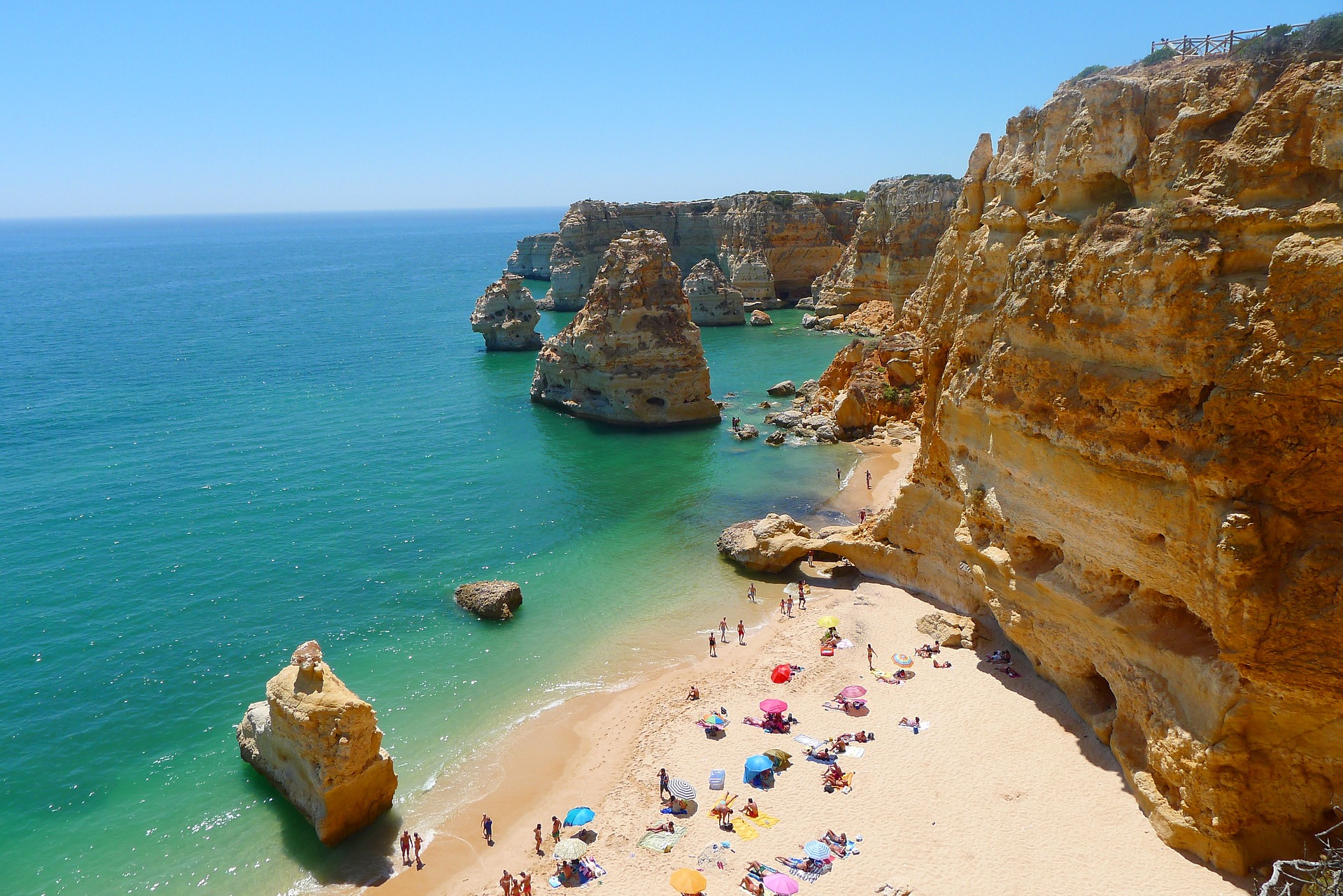Populated since prehistoric times, the place where it is today Albufeira was an important fishing and port center, according to references that go back to the neolithic and the age of the bronze period.
Several people passed through the town, among them the Romans who named it Baltum and later the Arabs who gave it the name Al-buhera, or “castle of the sea” and which gave rise to the present toponym of the city.
Albufeira was one of the Algarve centers that stayed longer under Arab rule, protected by almost inviolable walls and fortifications. Already most of the Algarve was under Christian rule and Albufeira still remained dominated by the Moors who developed a thriving agricultural and trading activity with North Africa.
From the middle of the 19th Century, Albufeira was to re-launch as an important fishing center, registering great economic progress, which intensified at the beginning of the 20th Century, with the increase in the export of fish and dry fruits and the creation of several factories that employed around 800 people.
However, between the 30s and 60s, there have been times of decadence. With the bankruptcy of the shipowners and the factories, many houses and boats were left to abandon and the number of inhabitants reduced drastically.
From the mid-1960s onwards, Albufeira would have aroused interest, first of the national tourists and, after the British, causing a real boom in tourism, giving new impetus to the county’s economy.
FARO
A holiday destination, often overlooked, regarded simply as a point of entry to southern Portugal, via the main airport of the region. This has allowed Faro to retain its peaceful ambience and traditional charm that is centred around the pretty walled old town. Situated on the edge of the Ria Formosa national park, a series of saltwater lagoons and mudflats that are a haven for migratory birds and wildlife.
Beyond the Ria Formosa national park are the three sandbar islands, which are the location for Faro’s beaches and are some of the least developed in the Algarve. With its medieval cobbled streets, this cultured city is a cut above southern Portugal’s other coastal resorts. Faro boasts more historic monuments and buildings than many other Algarve towns, while the pleasant shopping zone is lined with open-air cafes and designed for Portuguese shoppers.
The historical centre is encircled by ancient city walls, and once entered via the decorative Arco do Vila gate cobbled streets lead up to the gothic Se Cathedral, Paco Episcopal Palace and the Nossa Senhora convent.
LAGOS
The origin of Lagos appears associated to the small waterways, with springs in the “Espinhaço de Cão”, that here formed lagoons delimited by sand dunes. They were anchorages rich in fish and bivalves. Soon it became a place of pleasure to several peoples that made it an important commercial warehouse.
Phoenicians, Greeks and Carthaginians passed by. It was fought by Romans, Moors and Portuguese. Lacóbriga is the Roman denomination of the town. Subsequently, the Arabs call him Zawiya. In 1249 it is definitively integrated in Portuguese territory by order of king Afonso III.
However, it´s the Arab civilization that most influenced the experience of the people to come. Even today, linguistic, cultural and architectural legacy are visible.
Due to its location and economic importance, Lagos became a focal point for the Portuguese Discoveries, from the 15th Century. Hence Prince Henry the navigator, made Caravels leave in demand of new worlds. Gil Eanes, the hero of Bojador Cape, was born here. Here came the first riches of Africa: Gold, silver, ivory … They were times of splendor and glory.
SAGRES
Sagres is remote, adventurous and unlike any other destination in southern Portugal. The small town is situated at the extreme western tip of the Algarve, a region of dramatic natural scenery; comprising of raging seas, towering cliffs and vast beaches.
The history and myth of Sagres are confused with the one that was, for centuries, the furthest point from the known world, cape St Vincent. Wrapped in awe of mystery and respect, which the coast, the wind and the wild vegetation impose, its mythical load feels.
Since the Neolithic period, Cape St Vincent is used as a place of worship. As early as the fourth century BCE, Greek authors reported religious ceremonies involving libations and the prohibition of human presence at night, since it was a place frequented by gods.
Climbing to the promontory, consulting the gods, keeping promises, was an obligatory ritual of all the sailors who ventured out to sea, peopled by terrible monsters. It was here that Prince Henry founded the school that contributes to the discovery of the world. This is where the globalization of the world began.





